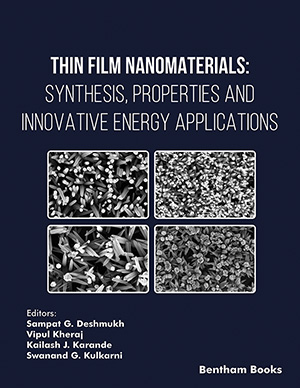
Abstract
Cancer is a complex, one of the fatal non-communicable diseases, and its treatment has enormous challenges, with variable efficacy of traditional anti-cancer agents. By 2025, it is expected that 420 million additional cases of cancer will be diagnosed yearly. However, among various types of cancer, brain cancer treatment is most difficult due to the presence of blood-brain barriers. Nowadays, phytoconstituents are gaining popularity because of their biosafety and low toxicity to healthy cells. This article reviews various aspects related to curcumin for brain cancer therapeutics, including epidemiology, the role of nanotechnology, and various challenges for development and clinical trials. Furthermore, it elaborates on the prospects of curcumin for brain cancer therapeutics. In this article, our objective is to illuminate the anti-cancer potential of curcumin for brain cancer therapy. Moreover, it also explores how to defeat its constraints of clinical application because of poor bioavailability, stability, and rapid metabolism. This review also emphasizes the possibility of curcumin for the cure of brain cancer using cuttingedge biotechnological methods based on nanomedicine. This review further highlights the recent patents on curcumin-loaded nanoformulations for brain cancer. Overall, this article provides an overview of curcumin's potential in brain cancer therapy by considering challenges to be overwhelmed and future prospective. Moreover, this review summarizes the reported literature on the latest research related to the utility of curcumin in brain cancer therapy and aims to provide a reference for advanced investigation on brain cancer treatment.
Keywords: Brain cancer, nanomedicine, curcumin, patents, liposomes, nanoparticles, dendrimers, nanotherapeutics.
[http://dx.doi.org/10.3390/molecules27165327] [PMID: 36014565]
[http://dx.doi.org/10.2174/1574892817666220322085942] [PMID: 35319390]
[http://dx.doi.org/10.3390/ph15091071] [PMID: 36145292]
[http://dx.doi.org/10.1016/j.nantod.2022.101530]
[http://dx.doi.org/10.1021/acsami.2c12076] [PMID: 35921662]
[http://dx.doi.org/10.1186/s12645-021-00088-6]
[http://dx.doi.org/10.1002/anbr.202100008]
[http://dx.doi.org/10.1016/j.biomaterials.2022.121760] [PMID: 36044788]
[http://dx.doi.org/10.1016/j.carbpol.2019.115398] [PMID: 31635734]
[http://dx.doi.org/10.3390/nano12183201] [PMID: 36144994]
[http://dx.doi.org/10.3322/caac.21660] [PMID: 33538338]
[PMID: 28239999]
[http://dx.doi.org/10.1186/s12885-022-10471-0] [PMID: 36581832]
[http://dx.doi.org/10.1093/neuonc/nou223] [PMID: 25304271]
[http://dx.doi.org/10.1186/s13690-022-00965-5] [PMID: 36115969]
[http://dx.doi.org/10.1038/s41392-021-00572-w] [PMID: 34054126]
[http://dx.doi.org/10.1016/j.clinthera.2016.03.026] [PMID: 27158009]
[http://dx.doi.org/10.1038/s41392-017-0004-3] [PMID: 29560283]
[http://dx.doi.org/10.1016/j.biopha.2021.111928] [PMID: 34323701]
[http://dx.doi.org/10.3390/ijms232415765] [PMID: 36555406]
[http://dx.doi.org/10.1016/j.biopha.2022.113956] [PMID: 36411666]
[http://dx.doi.org/10.1016/j.molliq.2022.119042]
[http://dx.doi.org/10.1016/j.jep.2020.113626] [PMID: 33248183]
[http://dx.doi.org/10.1155/2022/6168199] [PMID: 35069976]
[http://dx.doi.org/10.36255/exonpublications.gliomas.2021.chapter8] [PMID: 34038052]
[http://dx.doi.org/10.1016/j.ijbiomac.2017.12.044] [PMID: 29229242]
[http://dx.doi.org/10.3390/nu13030950] [PMID: 33809462]
[http://dx.doi.org/10.3390/ijms21186619] [PMID: 32927725]
[http://dx.doi.org/10.3389/fphar.2022.990475] [PMID: 36120367]
[http://dx.doi.org/10.1038/srep20872] [PMID: 26887346]
[http://dx.doi.org/10.3390/biom11030392] [PMID: 33800000]
[http://dx.doi.org/10.1016/j.jtcme.2016.05.005] [PMID: 28417091]
[http://dx.doi.org/10.3390/molecules26164794] [PMID: 34443381]
[http://dx.doi.org/10.1016/j.biopha.2021.111584] [PMID: 34243623]
[http://dx.doi.org/10.3389/fphar.2020.00487] [PMID: 32425772]
[http://dx.doi.org/10.18632/oncotarget.27000] [PMID: 31360301]
[http://dx.doi.org/10.1016/j.chmed.2021.11.003] [PMID: 36117672]
[http://dx.doi.org/10.1111/j.1476-5381.2012.02002.x] [PMID: 22536923]
[http://dx.doi.org/10.1089/cbr.2019.2874] [PMID: 31539270]
[http://dx.doi.org/10.1111/j.1440-1681.2011.05648.x] [PMID: 22118895]
[http://dx.doi.org/10.3390/molecules25204839] [PMID: 33092261]
[http://dx.doi.org/10.3390/ijms19061637] [PMID: 29857538]
[http://dx.doi.org/10.1021/acs.jmedchem.6b00975] [PMID: 28074653]
[http://dx.doi.org/10.1080/17425255.2017.1360279] [PMID: 28776444]
[http://dx.doi.org/10.1080/14756366.2022.2116015] [PMID: 36039017]
[http://dx.doi.org/10.1007/s13318-015-0308-z] [PMID: 26563392]
[http://dx.doi.org/10.3389/fchem.2018.00360] [PMID: 30177965]
[http://dx.doi.org/10.2147/IJN.S287665] [PMID: 33603359]
[http://dx.doi.org/10.3390/polym12020300] [PMID: 32024291]
[http://dx.doi.org/10.3390/nano11030597] [PMID: 33673636]
[http://dx.doi.org/10.1016/j.biopha.2018.12.133] [PMID: 30611991]
[http://dx.doi.org/10.3390/ijms22010196] [PMID: 33375513]
[http://dx.doi.org/10.3390/nano11010002] [PMID: 33374979]
[http://dx.doi.org/10.2147/IJN.S347187] [PMID: 35095273]
[http://dx.doi.org/10.3762/bjnano.11.72] [PMID: 32551212]
[http://dx.doi.org/10.1016/j.exger.2021.111438] [PMID: 34098006]
[http://dx.doi.org/10.1016/j.jconrel.2016.11.025] [PMID: 27889394]
[http://dx.doi.org/10.3390/biomedicines9111516] [PMID: 34829745]
[http://dx.doi.org/10.31031/NACS.2021.06.000639] [PMID: 35237758]
[http://dx.doi.org/10.2147/IJN.S262690] [PMID: 32943865]
[http://dx.doi.org/10.1007/s12035-020-01922-5] [PMID: 32430842]
[http://dx.doi.org/10.1080/10717544.2018.1474974] [PMID: 29869524]
[http://dx.doi.org/10.2147/IJN.S138501] [PMID: 28848349]
[http://dx.doi.org/10.1080/10717544.2016.1233589] [PMID: 28155567]
[http://dx.doi.org/10.1038/s42003-022-03834-7] [PMID: 36050388]
[http://dx.doi.org/10.1371/journal.pone.0225660] [PMID: 31841506]
[http://dx.doi.org/10.1038/s41467-018-04910-5] [PMID: 30018290]
[http://dx.doi.org/10.1155/2017/9656719] [PMID: 29359011]
[http://dx.doi.org/10.3390/molecules23010201] [PMID: 29346317]
[http://dx.doi.org/10.1080/10717544.2020.1785581] [PMID: 32611218]
[http://dx.doi.org/10.2147/IJN.S157019] [PMID: 29588587]
[http://dx.doi.org/10.1371/journal.pone.0164637] [PMID: 27736939]
[http://dx.doi.org/10.2147/IJN.S106736] [PMID: 27499621]
[http://dx.doi.org/10.1097/MD.0000000000018467] [PMID: 31914018]
[http://dx.doi.org/10.1080/07391102.2020.1766570] [PMID: 32397834]
[http://dx.doi.org/10.3390/ijms23084102] [PMID: 35456919]
[http://dx.doi.org/10.1080/03639045.2019.1672717] [PMID: 31549866]
[http://dx.doi.org/10.1016/j.ijpharm.2011.06.030] [PMID: 21729743]
[http://dx.doi.org/10.1016/j.jbiotec.2021.03.010] [PMID: 33727082]
[http://dx.doi.org/10.1615/CritRevBiomedEng.2020034302] [PMID: 33389893]
[http://dx.doi.org/10.1038/s41598-019-55619-4] [PMID: 31836788]
[http://dx.doi.org/10.3390/ijms23063360] [PMID: 35328780]
[http://dx.doi.org/10.3390/ijms221810118] [PMID: 34576281]
[http://dx.doi.org/10.1016/j.neuint.2020.104952] [PMID: 33400964]
[http://dx.doi.org/10.2174/2468187310999200430093239]
[http://dx.doi.org/10.3390/pharmaceutics6040557] [PMID: 25407801]
[http://dx.doi.org/10.2174/18734294MTE10Mjkvy] [PMID: 33845744]
[http://dx.doi.org/10.2147/IJN.S124276] [PMID: 28260885]
[http://dx.doi.org/10.2174/18755305MTA2lMTEgw] [PMID: 32334494]
[http://dx.doi.org/10.1016/j.jfda.2017.02.001] [PMID: 28911663]
[http://dx.doi.org/10.1016/j.btre.2021.e00663] [PMID: 34557390]
[http://dx.doi.org/10.18632/oncotarget.9593] [PMID: 27232756]
[http://dx.doi.org/10.3390/molecules191220091] [PMID: 25470276]
[http://dx.doi.org/10.1007/s00018-008-7452-4] [PMID: 18324353]
[http://dx.doi.org/10.2174/092986710790149738] [PMID: 20214562]
[http://dx.doi.org/10.3390/molecules27020341] [PMID: 35056657]
[http://dx.doi.org/10.1080/10937404.2020.1860842] [PMID: 33357071]
[http://dx.doi.org/10.2147/DDDT.S327378] [PMID: 34754179]
[http://dx.doi.org/10.3390/biomedicines9091086] [PMID: 34572272]
 22
22 2
2























